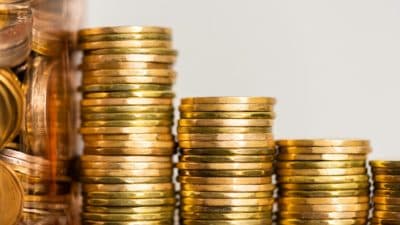Attention drivers: Get ready to pay more at the pump. On Wednesday, gas prices across the country neared three-year highs.
Montreal residents woke up to price hikes of more than nine cents per litre overnight. According to GasBuddy.com, motorists are paying an average of $1.53, earning the city the distinction of having the highest gas prices in Canada.
Vancouver motorists have now been relegated to paying only second-highest prices in the country at $1.51 per litre. In the Greater Toronto Area, drivers are playing a relatively reasonable $1.40 per litre on average. In Quebec and Alberta, prices increased an average of four cents per litre. In Edmonton and Regina, prices were up by an average of five cents per litre.
So why have prices at the pump suddenly rocketed higher? Here are four reasons for the run-up.
1. We’re approaching the summer driving season
Gas prices typically rise in the spring as refineries slow down operations in order to switch from producing winter fuel blends to less polluting summer grades. Gasoline demand is also ramping up as we head into the summer driving season.
This is also the time of year when many refineries schedule their annual maintenance. On Tuesday, Suncor (TSX: SU)(NYSE: SU) announced a four-week shutdown of its Montreal refinery, taking as much as 137,000 barrels per day offline. During this period the company will be forced to pay higher prices by import supplies from Ontario and the Northeastern United States.
2. Crude oil prices are soaring
Crude oil is the single most important driver of gasoline prices. With signs that the global economy is heating up and supply corners related to the crisis in Ukraine, crude oil prices have been trading sharply higher in recent weeks. Oklahoma West Texas Intermediate is up about 11% since January to U.S. $92 per barrel, while North Sea Brent is trading up 5% over the same timeframe to U.S. $109.
3. The Canadian dollar is falling
To many observers, the Bank of Canada is engineering a stealth devaluation of the Canadian dollar in order to get the country’s economy back in gear. Over the past year, the Loonie has lost nearly 10% of its value relative to the U.S. dollar.
While this is a gift to the nation’s struggling manufacturing, tourist, and exporting industries, the policy comes at the expense of Canadian motorists. Because crude prices are set in U.S. dollars, it means Canadian refineries are paying more for oil and must pass these costs onto drivers. Year over year, the falling Loonie accounts for nearly all of the increase in fuel prices.
4. Refineries are going out of business
This year the gasoline market is even tighter than normal as several refineries have closed amid competitive pressures. Thanks to a combination of higher crude prices, slow demand growth, and burdensome environmental regulations, Imperial Oil (TSX: IMO) announced the closure of its Dartmouth, Nova Scotia, facility last year. This follows Shell Canada, which shut down its Montreal unit in 2010.
This trend is unlikely to reverse. Across the continent we are witnessing a wave of refinery closures as older units are no longer economically attractive to run. Since 2009, North American capacity has dropped by 5% as integrated oil companies sell off or shut down their lower margin refining businesses. With fewer barrels of crude being refined, drivers have to pay a bigger premium over oil prices.
Foolish bottom line
Sorry folks, there’s no conspiracy here. There are no shadowy men in smoke filled boardrooms plotting to drive up pump prices. Canadian motorists are just on the wrong end of several economic trends.







